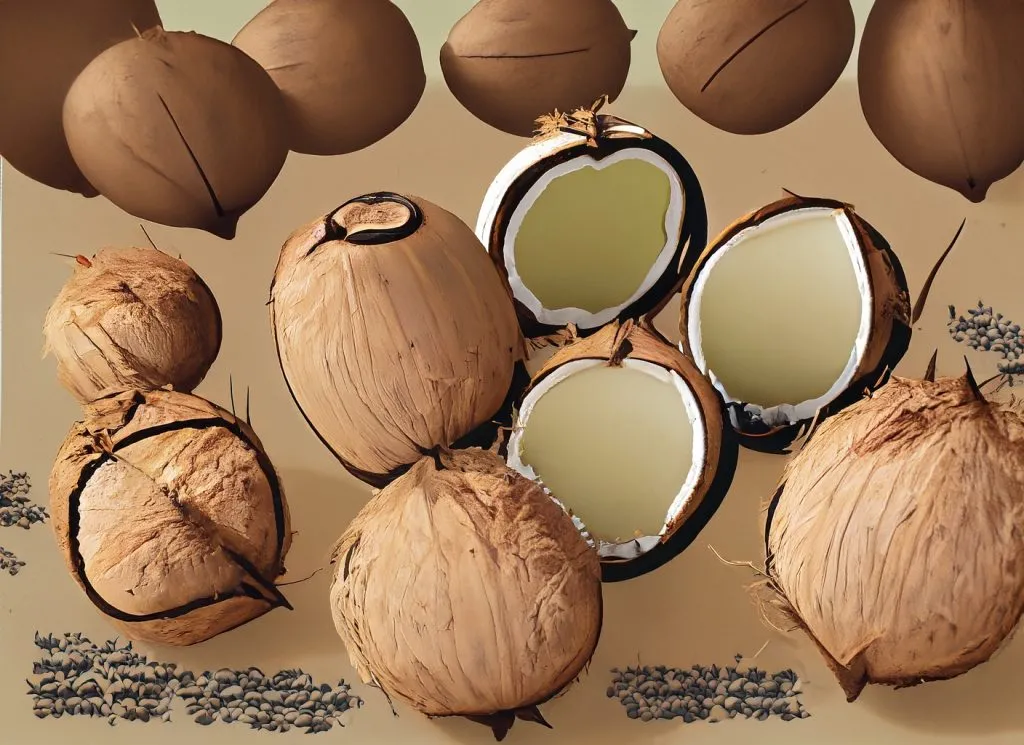What is the brown bit on a coconut?
When picturing a coconut, it’s common to visualize its hard, brown shell, especially if you reside outside tropical regions. This brown layer is a familiar sight in supermarkets and kitchens, but what exactly is it? Let’s delve into the anatomy of the coconut to understand this better.
The Hard, Brown Shell
Often when people refer to the “brown bit” on a coconut, they are referencing its hard, woody shell. This layer, known as the endocarp, is the protective barrier that encases the delicious coconut meat (endosperm) and the water inside.
Significance and Function
The brown shell’s primary function is protection. It safeguards the inner soft, white meat and the embryonic plant from physical damage and microbial attacks. The hardness of this shell ensures that the coconut can endure falls from great heights (like tall coconut trees) without breaking open.
Additionally, this shell plays a role in the seed’s dispersal. Being buoyant, coconuts often float across seas and oceans to colonize new shores. The hard shell ensures the seed remains intact during these long journeys.
Beyond the Hard Shell
While the brown shell is an essential component, the coconut has multiple layers. Outside this shell lies the fibrous husk, and within, you find the delectable white meat and clear coconut water.
To further explore the wonders of coconuts, consider reading about the mystical coconut apple .
For a broader perspective on seeds and their protective mechanisms, this comprehensive article on Nature’s Seed Coats and Their Evolution could be enlightening.

